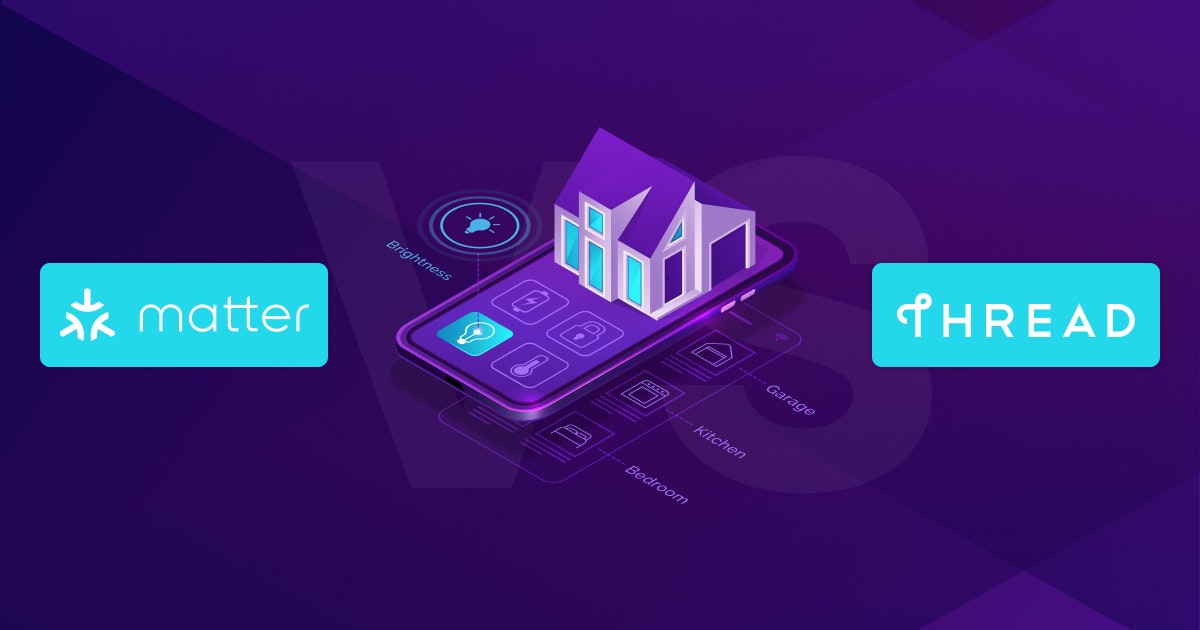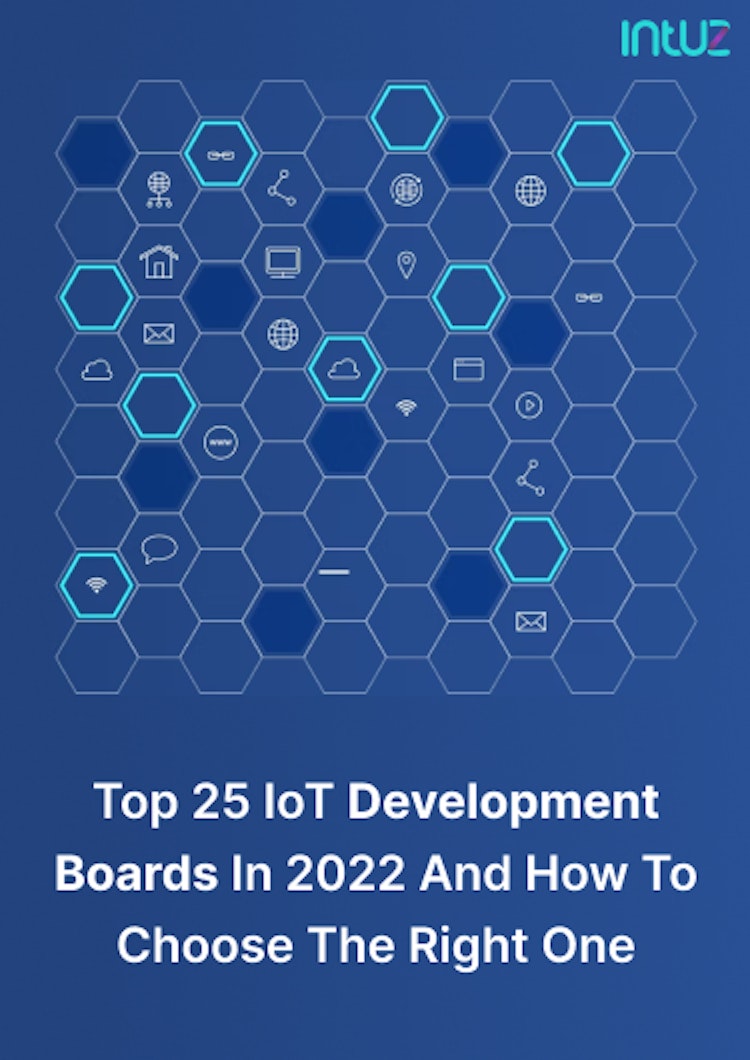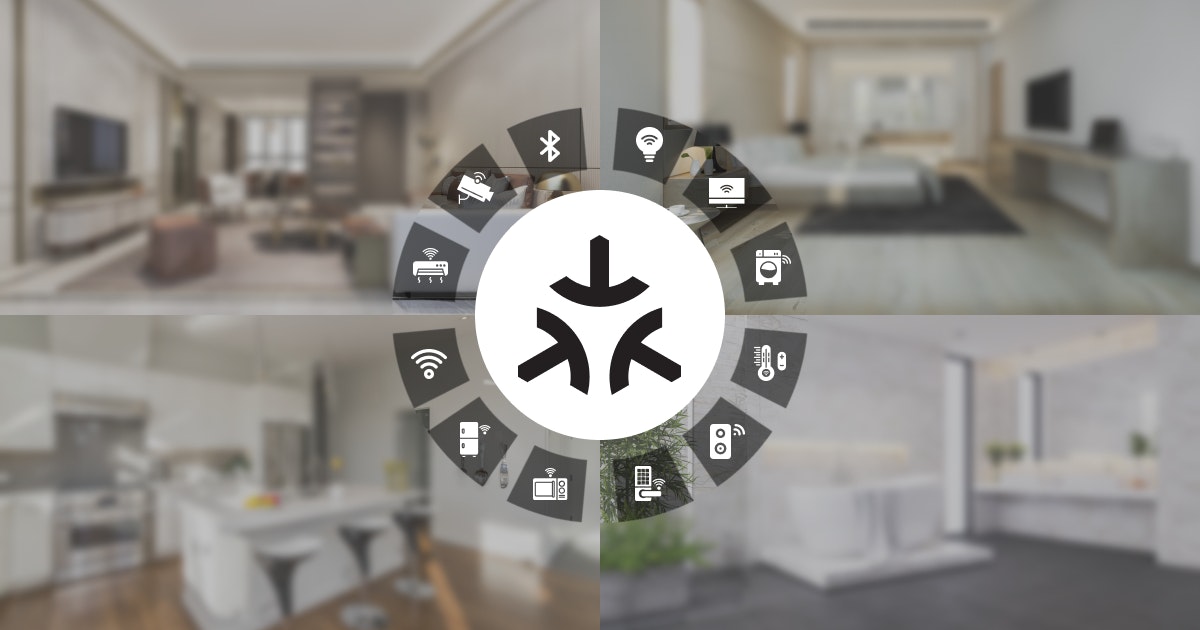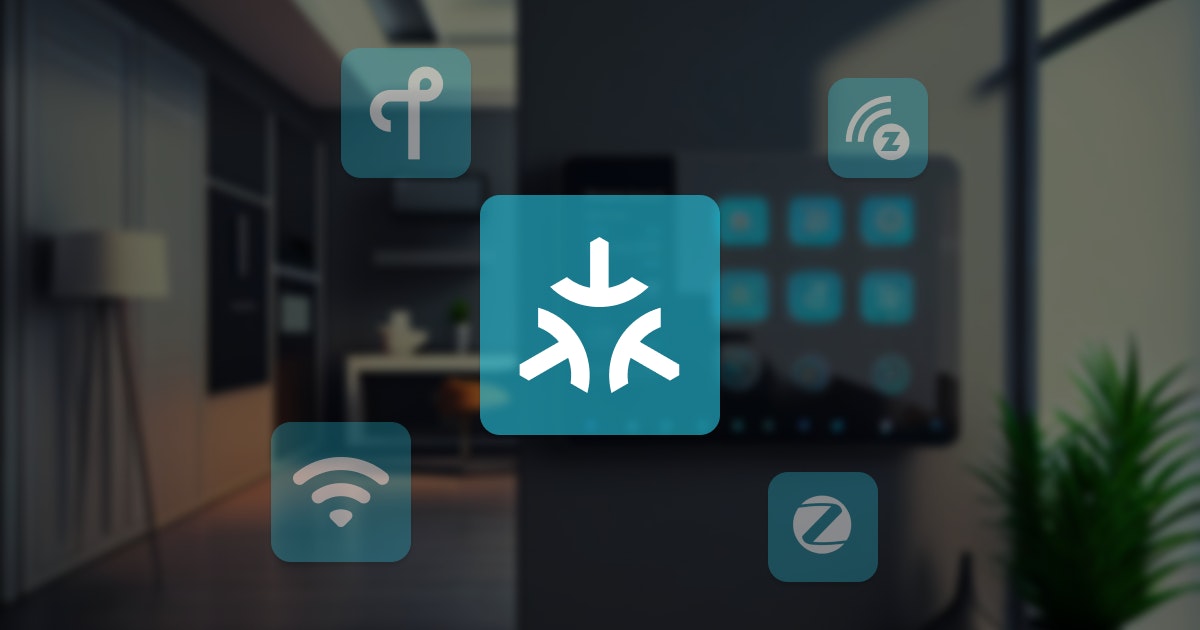Table of Content
Although popular and growing rapidly, the smart home space is currently a bit of a mess. Sure, it is fun to buy a new device for your home. But you must study its documentation carefully to determine where the device sits in the patchwork of compatibility amongst all the other devices you own. Who needs that hassle?
If the device is compatible, then you are in luck. You can set it up easily. It usually involves downloading another manufacturer's application, jumping through configuration steps, and then connecting their backend to your preferred ecosystem - Amazon Alexa, Google Home, or Apple Homekit.
You may discover that a few features of the device are limited to the manufacturer's app and cannot be accessed from other systems. Once you have everything set up, you may realize that different manufacturer systems do not necessarily play nice with each other, causing the devices to stop responding, lag, or even break.
Do not be surprised if you find yourself stuck in the garage because the smart garage door has a glitch, or the lights would not switch on! Would it not be great if all Internet of Things or IoT enabled devices followed a common communication protocol and worked well together?
That is where Matter and Thread enter the picture. In this blog post, we will study how both connectivity standards contribute to the IoT ecosystem. Let us begin:
Matter
What is Matter?
Matter is a new smart home standard supported by major companies such as Google, Amazon, and Apple in the tech industry. It addresses many issues around smart home devices, including interoperability, security, and privacy.
Matter is a language developed by a coalition of companies, including platform owners, manufacturers, and accessory makers. It allows smart devices to communicate among themselves - irrespective of their manufacturer. Companies such as Apple, Google, Amazon, Samsung, LG, Nanoleaf, Eve, and Wyze are all members of the coalition for Matter.
Matter is set to revolutionize the smart home market by creating a genuinely integrated and secure smart home experience for all users. Its goal is to simplify everything about smart homes, from purchase and set up to everyday use.
One of Matter's main promises is that it will enable smart devices to work with each other across platforms and ecosystems. Potential benefits of Matter include increased compatibility between IoT software solutions and decreased frustration for users as and when new devices are released.
However, Matter also faces some challenges, such as getting more and more manufacturers on board and ensuring that the platform is safe and secure to use. Despite its fast adoption, Matter is still striving to overcome the roadblocks, and only time will tell if it will be successful in its quest to make smart homes simpler and more interoperable.
Adding to that thought, here is what industry experts, supporters, and the Connectivity Standards Alliance (CSA) say about it:
How does Matter work?
Matter is an open-source code project that allows the line of products designed using it to connect. So when buying Matter smart home appliances, you can pick any device marked with Matter as it will effortlessly connect with other Matter-branded devices.
Matter uses wireless technology, which is similar to WiFi routers. It is based on Internet Protocol (IP), allowing your verified devices to connect to the same network. It does not involve any other technology, allowing Matter-certified devices to work together effortlessly.
Users can design a universal smart home environment with devices from different manufacturers working harmoniously. For end-users, this means using a Matter motion sensor controller as an input for controlling their other Matter-enabled products such as smart lights or HVAC systems. Therefore, they can effortlessly pick any Matter-certified products and fit them into their connected home network.
Unlike other platforms, Matter has been built from scratch with an application layer in which software developers can create unique and innovative applications for our smart devices. It promises to offer an unparalleled user experience while being fully open-source, allowing endless customizations based on usage.
Ready to Implement Matter or Thread in Your Smart Home Project?
Contact UsWho owns Matter?
Matter is owned by an exclusive club of tech industry giants. The CSA is a group of tech giants who manage Zigbee's wireless communications standard.
Over 200 companies, including Amazon, Samsung, Huawei, Apple, and Google, are prominent members that have established the open platform to connect devices from different manufacturers. NXP, STMicroelectronics, Texas Instruments, Motorola, and several other component companies also support the Matter standard.
Which platforms will work with Matter?
Amazon Alexa, Google Nest, Samsung SmartThings, and Apple HomeKit are the four major smart home platforms supporting Matter. Users can use their IoT apps and devices such as smart speakers, displays, and voice assistants to control connected devices.
Matter also provides a feature called Multi-Admin control, which allows you to connect several Matter-enabled platforms and devices with the same account. This means your Nest thermostat can be controlled through Apple's Siri or Amazon's Alexa voice assistants - both at once, if desired. Matter is a connectivity standard and does not work as an automation tool.
While Matter will have some basic controls built-in, it cannot create automation. For any other functions, you will need an automation platform or app to support the function. Matter allows automation to run across devices even if they are from different companies. Let us study the four smart home platforms supporting Matter:
1. Amazon Alexa
Eero, Amazon's mesh WiFi network company, supports Matter. Its routers have built-in Thread radios, which can be upgraded to support Matter. Amazon's fourth-generation Echo smart speaker can act as a bridge between Amazon's Thread network and WiFi.
It gets an upgrade to a border router that uses Matter's primary protocol, Thread, to connect devices, such as lights or doorbells in one system using voice commands.
2. Google Nest
Google Nest supports Matter by updating its smart speakers and displays. It also launches new products, such as the Nest WiFi, Nest Hub Max, and second-gen Nest Hub. These products have built-in Thread and serve as border routers.
Google also supports Matter through the Google Home Device SDK. Google plans to update its mobile devices with Matter support, allowing users to streamline setting them up.
3. Apple Homekit
Apple's products already support Matter, as the HomePod Mini and Apple TV 4K (second-gen) come with in-built Thread radios. The company's Home application and Siri on Apple devices are automatically compatible with Matter-enabled accessories.
4. Samsung SmartThings
Samsung SmartThings hubs can be easily upgraded to support Matter. Though unsure of using Thread or WiFi, Matter intends to enable the use of various devices such as smartphones, smart TVs, and smart appliances seamlessly.
Which products do not work with Matter?
Matter wireless products are still developing and will be available in the fall of 2022. Each product is built using innovative design and cutting-edge technology. All products with the Matter logo will be compatible with a Matter-enabled network. However, Matter will currently not support smart security cameras and home security systems.
Which are the smart home privacy and security protocols in Matter?
Matter is designed with a zero-trust approach and is secure as it uses industry-standard encryption technology. Every device is authenticated before it joins the Matter network. Matter's Privacy Principles are designed to protect your data and ensure you understand how it will be used. The device manufacturers govern the home data collected by your devices.
Matter security principles as laid down by Connectivity Standards Alliance (CSA)
As you know - Matter is an industry-unifying standard for delivering reliable, secure, and seamless connectivity. Built on IP, it enables undeterred communication across smart home devices over IP-based networking technologies, starting with Ethernet, Wi-Fi, and Thread.
As IoT connects an increasing number of systems and devices daily, the risks of cyber-attacks increase, limiting adoption and driving hesitation by users. To address the issue, Matter was created, keeping security as the focal point. As per CSA, Matter embodies the following five properties:
Comprehensiveness
Depending on the target application, every Matter device deploys an application layer on top of a Matter-enabled software stack, running on a hardware platform, which is basically a secure MCU or SoC with an additional companion secure element or functionality, such as safe cryptographic key storage, random number generation, and tamper resistance.
What are the potential concerns for matter adoption in the industry?
Matter is a revolutionary new platform that will change how we think about home automation. It is an application layer that unifies different smart home devices and connected products onto one common platform.
Matter addresses the current challenge of communication and compatibility among smart devices from different manufacturers. It ensures that the devices are coded to work together seamlessly. However, it is not free from challenges when it comes to its adoption:
1. Planned obsolescence
With new standards coming into play, many companies may stop supporting their existing devices. The individual device-maker has the choice of whether or not they want to provide updates for these old models or force users into upgrading their devices.
2. Two tiers of capabilities
Companies may create two tiers of capabilities. They may support Matter through their standard product with elementary features but withhold premium features for their own devices. For instance, only the smart doorbell may function with Matter, but the built-in security camera may not function. This is only an assumption, as the actual adoption may be seen after the release of Matter.
How does the future of Matter look?
Matter is slated to be released in fall 2022, and experts anticipate it will lay the foundation for the next smart home generation.
With the potential to revolutionize the IoT application development process, Matter will be a critical component for companies bringing the latest IoT products to the market. It is estimated that more than 5.5 billion Matter devices will be shipped by 2030.
Thread
Thread is a revolutionary new protocol that uncomplicates the functioning of IoT. With no single point of failure, the Thread network is a low-latency wireless Internet Protocol version 6 (IPv6)-based mesh network. It is reliable and secure without any need for complex setup or maintenance.
How Matter Protocol Compares Against Other Smart Home Standards
Read NowThread makes connecting any device with a network connection easy, eliminating the need for proprietary gateways or translators. This reduces complexity and investment in your infrastructure. With no extra equipment in the picture, the number of potential failure points and maintenance burden also get reduced.
How does Thread work?
Built on IEEE 802.15.4 MAC/PHY, it was designed for low-power and low-bandwidth control applications. Therefore, it is the ideal choice for small IoT devices with power constraints.
As WiFi supports high bandwidth data, such as video and audio, while connecting to the internet, Thread is a complementary technology to WiFi and Matter. Using Thread on battery and constrained devices brings them into the same infrastructure as WiFi but with reduced complexity. Thread devices connect to the internet easily as it runs on IPv6.
They can communicate directly with each other via a Thread Border Router. The network supports up to 250 nodes and 32 active routers per network, and that is pretty good!
Who owns Thread?
Thread networking standard is developed, maintained, and promoted by the Thread Group. It comprises more than 100 member companies from varied industries such as computing, silicon manufacturing, consumer electronics, and building automation.
Thread Group maintains working liaisons with many organizations such as the Connectivity Standards Alliance (makers of Matter), KNX Association, DALI Alliance, BACnet, and OCF. Thread is an application-agnostic networking standard. These organizations also deal in IP-based home and building automation standards.
IoT Smart Home Security: Benefits, Use Cases, and Top Devices
Learn MoreWhat are the top thread-certified products?
Thread is an IP-based mesh network. It is designed to securely and reliably connect smart products around the home. Thread's technology is not reliant on a home internet connection or WiFi. Instead, it provides a dedicated network for connecting products around the home. In this section, we will discuss five popular Thread-certified products you must know about:
1. Google Nest Hub Max
The Google Nest Hub Max is the perfect smart display for an entire range of home appliances. It offers a 10-inch HD screen, built-in camera, and speakers to control connected devices with just voice commands or through its intuitive interface.
2. Wemo WiFi Smart Plug
It uses Thread technology and provides total control over smart lights and devices. Wemo WiFi Smart Plug is compatible with iPhone, iPad, WEMO Stage Scene Controller, and even supports voice commands through Siri.
3. Farm Jenny Field Receiver
A solar-powered Thread mesh network router is used as the Farm Jenny for Horses solution. The self-contained field receiver provides a full-farm mesh network.
4. Schlage Encode Plus™ Smart WiFi Deadbolt
This innovative smart lock works seamlessly with Apple HomeKit and smart locks. It offers advanced features such as scheduling access codes, hands-free voice control, and monitoring lock activity.
5. Nanoleaf Essentials A19 Smart Bluetooth LED Bulb
The first and only LED lightbulb that works with Thread, the Nanoleaf Essentials A19 LED bulb is a smart color-changing device. It offers 16 million different colors to choose from and an exquisite temperature range for brightness.
What are the Main Benefits of Thread?
Thread provides the network for devices to run on. It works along with Matter, which provides a connection protocol facilitating device interoperability. It also has the following benefits:
1. Global solution
Thread is an open standard that leverages existing technologies. It ensures seamless integration with the IoT infrastructure with minimal risk of incompatibilities. The IEEE 802.15.4 radio technology on the 2.4 GHz spectrum, used by Thread, can be deployed globally.
2. Built for IoT
Thread solves the complexities of IoT by addressing challenges, such as interoperability, security, and reliability. This network's possibility of single-point failure is minimal as it comprises many small nodes. All the nodes individually have self-healing capabilities.
3. Flexibility and future-proof
Thread supports faster time to market as it uses the same set of tools available on the internet. Being application-layer agnostic allows the application layer and the cloud services of Thread smart devices to be changed over time.
4. Convergence and coexistence on Thread
Thread's IP foundation offers application-agnostic networking for product manufacturers. It supports the rising demand for interoperability and coexistence.
Drawbacks of Thread protocol
Thread does not support very high data rates or long range. It supports a maximum of 250 devices, less than 65560 devices supported by Zigbee. Native IPv6 requires a router to convert from 802.15.4 to an additional IP interface. Thread does not support high data rates, which is not the case with WiFi.
What is the difference between Matter and Thread?
Matter is an application layer that is built on the Thread networking technology. Thread is internet protocol-based, eliminating the need for Matter devices to revisit an application layer for translation. Thread devices are already available in the market, while Matter products are scheduled for launch soon. Here are the top dissimilarities between the two:
Seamless IoT Connectivity: Let's Explore Matter and Thread for Your Project!
Contact UsOver to you
The promise of building our own smart home and smart environment is indeed enticing. Consider products with thread radios first, then WiFi, as both have clear upgrade protocols. If neither option suits your immediate needs, look for products with bridges or hubs that contain either protocol.
If you want to kickstart with Matter, purchasing a Thread border route is best. While Matter will work over Thread and WiFi - meaning, you do not have to use a border router for a solid foundation to build a Matter-supported home.
Book a Free 45-minute Consultation with Our IoT Experts Today! If you would like an expert to share their thoughts on Thread or Matter smart home automation.







